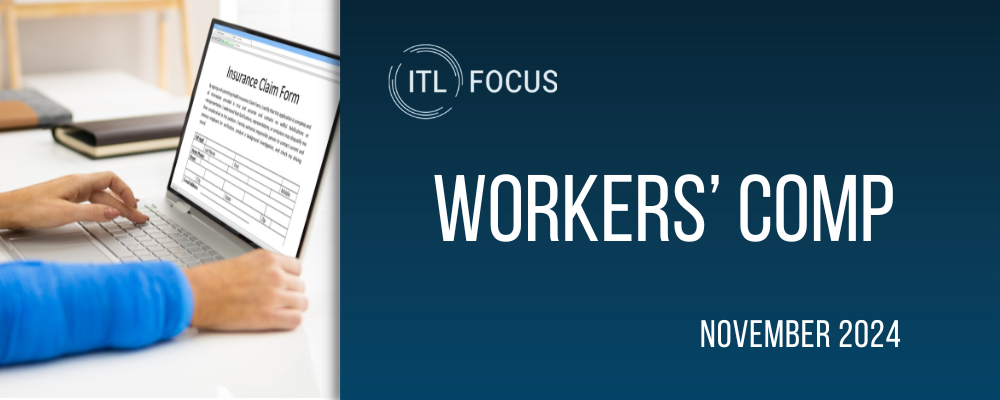Understandably, Part 1 of this article series has been met with some controversy and skepticism. The article is not designed to scare employers, as might have been suggested. Its intention is to educate employers about the many issues facing them when an employee becomes injured, that transcend the State Workers’ Compensation System and a workable solution to overcoming the challenges. Employers can no longer afford to bury their heads and rely on the exclusive remedy position. Yes, it may be here to stay, but it is becoming a bit frayed around the edges.
Coincidently, when Part 1 of this article was published, The National Football League (NFL) announced that it had reached a 765 million dollar settlement with players and their families for the settlement and consolidation of approximately 4,500 concussion claims. The players alleged that the NFL hid or ignored the facts that concussions caused brain injuries. Under the settlement, the NFL will pay 675 million dollars to retired players who demonstrate medical evidence of brain injury. Payouts of up to 5 million dollars each could go to players found to have Alzheimer's or Parkinson's diseases or other concussion-related conditions, or to their families. The settlement came just prior to the start of football season and will put an end to the mounting litigation that threatened the multi-billion dollar league.
United States District Presiding Judge Anita B. Brody appointed Judge Phillips to oversee the negotiations. Judge Philips said, “This is a historic agreement, one that will make sure that former NFL players who need and deserve compensation will receive it, and that will promote safety for players at all levels of football.”
“This agreement lets us help those who need it most and continue our work to make the game safer for current and future players. Commissioner Goodell and every owner gave the legal team the same direction: do the right thing for the game and for the men who played it,” said NFL Executive Vice President Jeffrey Pash. “We thought it was critical to get more help to players and families who deserve it, rather than spend many years and millions of dollars on litigation. This is an important step that builds on the significant changes we’ve made in recent years to make the game safer, and we will continue our work to better the long-term health and well-being of NFL players.”
Once final documentation is completed, the settlement will be filed with Judge Brody, who will then schedule a hearing to consider whether or not to grant preliminary approval to the agreement. The retired players will then have the ability to file objections to the settlement.
One may ask what this has to do with Part 1 of this article. An important component of this settlement is baseline testing. According to the settlement, baseline medical exams will be provided, the cost of which will be capped at $75 million. This will be a key element in ascertaining the conditions of current and retired players, gauging the progression of any injuries they may have and having documentation of the medical status. This key component is the subject of Part 1 of this article. Baseline testing is not simply a self-promotion for the EFA-STM, but is a major part of helping injured workers, no matter what their occupations may be.
These cases are just the beginning, and it appears that the exclusive remedy provision for workers' compensation will no longer serve to prevent costly civil litigation as evidenced by the NFL settlement. An employer, insurance carrier/TPA and physician can take several steps to protect themselves. First, evidence-based medicine should always prevail. Objective medical evidence can help protect against claims for fraudulent denials of work-related injuries. Also, employers should accept only claims that arise out of the course and scope of employment (AOECOE). If an employer can objectively document AOECOE issues, fraudulent claims and fraudulent denials can be avoided and most importantly, correct treatment can be prevail.
A good approach to determining AOECOE claims is baseline testing, as it can identify injuries that arise out of the course and scope of employment. When a work-related claim is not AOECOE, as proved by objective medical evidence, such as pre and post assessments, then not only is there no workers’ compensation claim, there is no OSHA recordable claim, and no mandatory reporting issue. Conversely, if there is an injury, the injured worker can get the best site specific treatment and prevent inappropriate treatment and unnecessary progression of the underlying conditions.
The NFL recognized the importance of baseline testing with its recent settlement, and it is only the beginning. MSD for NFL players is also a significant problem. Why not baseline all football players, or, for that matter, all professional athletes, to address any injuries that may occur while playing and return them to the field sooner? This would promote better health and performance and might extend their careers. Professional athletes tend to play through their injuries, potentially causing more harm. An objective baseline test can assist all parties by providing objective medical evidence of an injury and outlining appropriate care. This truly is a win-win situation.
A proven example of a baseline test for musculoskeletal disorders (MSD) cases is the EFA-STM program. EFA-STM program begins by providing baseline injury testing for existing employees and new hires. The data is interpreted only when and if there is a soft tissue claim. After a claim, the injured worker is required to undergo the post-loss testing. The subsequent comparison objectively demonstrates whether or not an acute injury exists. If there is a change from the baseline, site specific treatment recommendations are made for the AOECOE condition, giving the doctors more information and helping to ensure the injured worker receives the best care possible.
The case of the NFL settlement may not be a RICO claim, but, certainly, it tries the boundaries of the exclusive remedy provision of workers compensation. Baseline tests like the EFA-STM are a proven way to providing better work-related care. It is time for change and to think outside of the box to provide the answers so that we can become proactive, not reactive.





